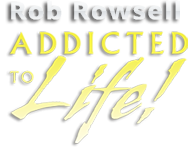Review parts 1 through 15 for details and thinking, then utilize the Recipe for Change.
Part 9 – Profit Protector
 Remember the Pocket Protectors from the past? Perhaps you are not old enough, so let me explain. They were made of plastic and would slide inside of your shirt pocket. When you slipped your pens and screw drivers in and out of the pockets protector it kept your shirt from getting ink stained or torn. They simply protected your pockets from wear and tear. Very handy devices from the past. Does anyone still use them?
Remember the Pocket Protectors from the past? Perhaps you are not old enough, so let me explain. They were made of plastic and would slide inside of your shirt pocket. When you slipped your pens and screw drivers in and out of the pockets protector it kept your shirt from getting ink stained or torn. They simply protected your pockets from wear and tear. Very handy devices from the past. Does anyone still use them?
I want to introduce a new protector call a “Profit Protector”. It is designed to insure profits for you business.
Here are a few questions to gather your thoughts:
- What day of the month does your business break even?
- Do you track your CODB (Monthly cost of doing business)?
- Do you track your daily gross profit dollars?
- Are you stacking up cash?
- Do you have sufficient working capital? (3 times monthly sales)
- Do you have sufficient reserve money? (6 times CODB)
Back in 1992 we required a gross profit of 42% to make money. In the year 2011, it required 61% to make money. Are you a student of your profit? Are you as student of your CODB?
Become a Profit Protector!
Would you like to join the club?
The Recipe for Change
When you’re baking a cake, there are certain ingredients that are necessary for the cake to come out as planned. You need to follow a step by step procedure. Include all portions as described, mix as indicated, then cook for the optimum time and temperature. Any variation from the recipe may cause an incomplete and utter disaster! If you don’t follow the recipe, you will not get the results you were expecting.
When you’re leading your company and staff through change, a recipe would be very helpful, so here it is:
- You must be totally committed to the change (1 gallon)
- It must be well defined and written (1 pint)
- You must be willing to accept the push back and resistance (1 quart)
- Create the WHY story to sell to sell your staff (Five Pounds)
- Talk to them one-on-one (1 Tablespoon)
- Give them time to adjust mentally to the change (Let Marinate 1 week)
- Let them express their feelings (Snap-Crackle-Pop)
- Set a rollout date for the change to occur (Cook Time 10 Days)
- Have many training sessions before rollout (Mixing steps)
- Establish the change as a habit (Tasting the results)
This is a quick and simple recipe for change. Follow the ingredients and steps, and see what results you will achieve. Review parts 1 through 15 for more details and thinking.
Management is the formula.
Leadership is the essential catalyst.
You are the stick that stirs the ingredients.

 What if you define the 10 Mission Critical Processes that make or break your business model? Then, what if you
What if you define the 10 Mission Critical Processes that make or break your business model? Then, what if you